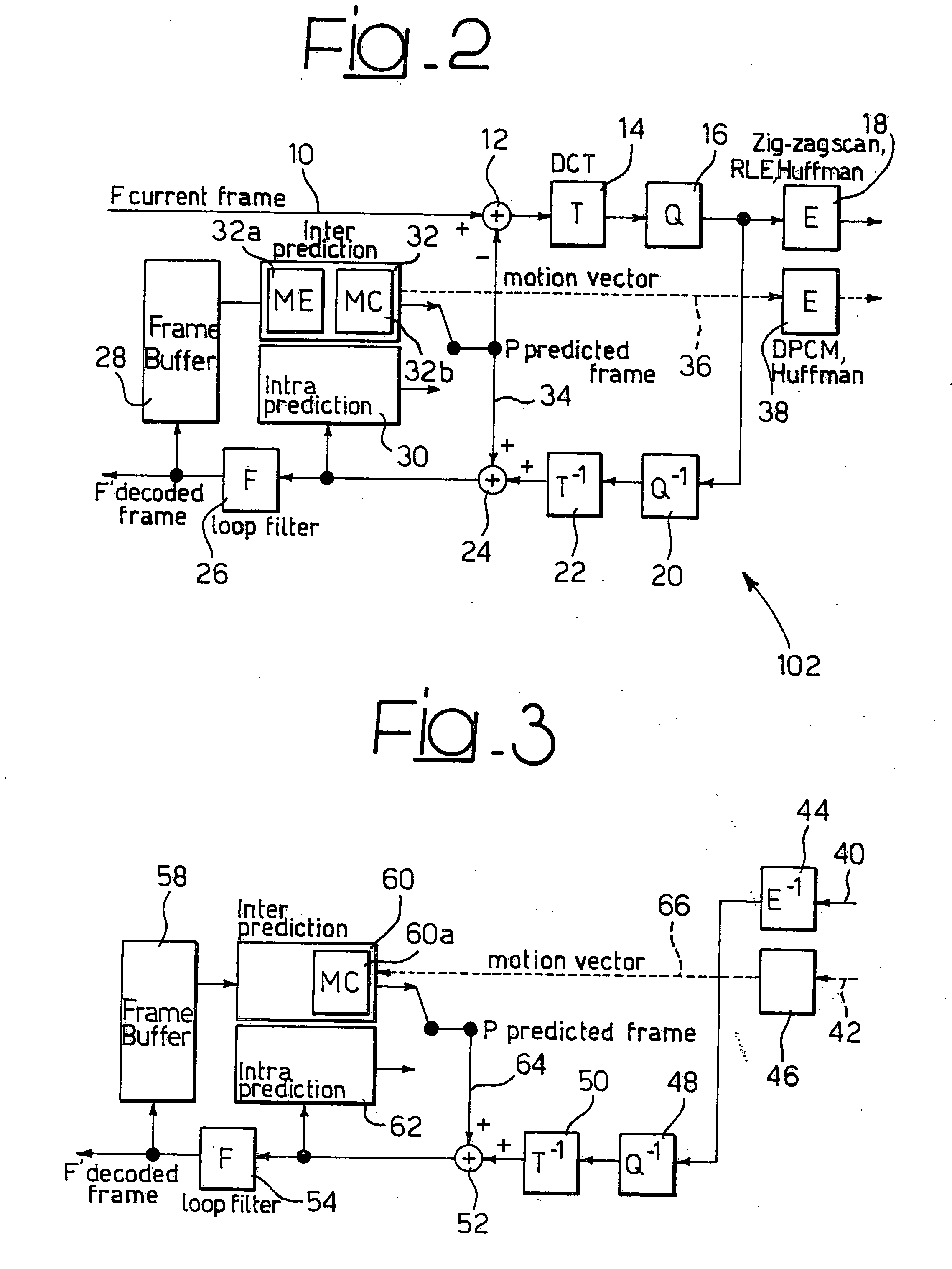Encoding/decoding methods and systems, computer program products therefor
a technology of encoding/decoding and computer program products, applied in the field of coding techniques, can solve the problems of reducing affecting the efficiency of coding in snr md, and affecting the temporal md of replicated headers/syntaxes, so as to enhance the robustness and error concealment capabilities, and efficiently utilize the error resilience
- Summary
- Abstract
- Description
- Claims
- Application Information
AI Technical Summary
Benefits of technology
Problems solved by technology
Method used
Image
Examples
Embodiment Construction
[0024]FIG. 1 shows a block diagram of an encoding / decoding system adapted to operate according to the invention. There, reference I indicates an input video sequence comprising a digital video signal to be transmitted. The input signal I is fed to a pre-processing block 100 that creates a multiple descriptions by way of spatial sub-sampling. This may occur based on any of the prior art techniques described in the introductory portion of the description. The subsequences from the pre-processing block 100 are fed to a set of N encoder blocks, each indicated 102.
[0025] Any known standard video encoder type can be selected among those commonly used in the art of video coding such as e.g. MPEG-2, MPEG-4, H.263, H.263+. A particularly preferred choice is a H.264 encoder. A general discussion of these encoders (and the corresponding decoders) can be found e.g. in: Iain E. G. Richardson “H.264 & MPEG-4 Video Compression, video coding for next-generation multimedia”, Wiley 2003 or Barry G. ...
PUM
 Login to View More
Login to View More Abstract
Description
Claims
Application Information
 Login to View More
Login to View More - R&D
- Intellectual Property
- Life Sciences
- Materials
- Tech Scout
- Unparalleled Data Quality
- Higher Quality Content
- 60% Fewer Hallucinations
Browse by: Latest US Patents, China's latest patents, Technical Efficacy Thesaurus, Application Domain, Technology Topic, Popular Technical Reports.
© 2025 PatSnap. All rights reserved.Legal|Privacy policy|Modern Slavery Act Transparency Statement|Sitemap|About US| Contact US: help@patsnap.com



